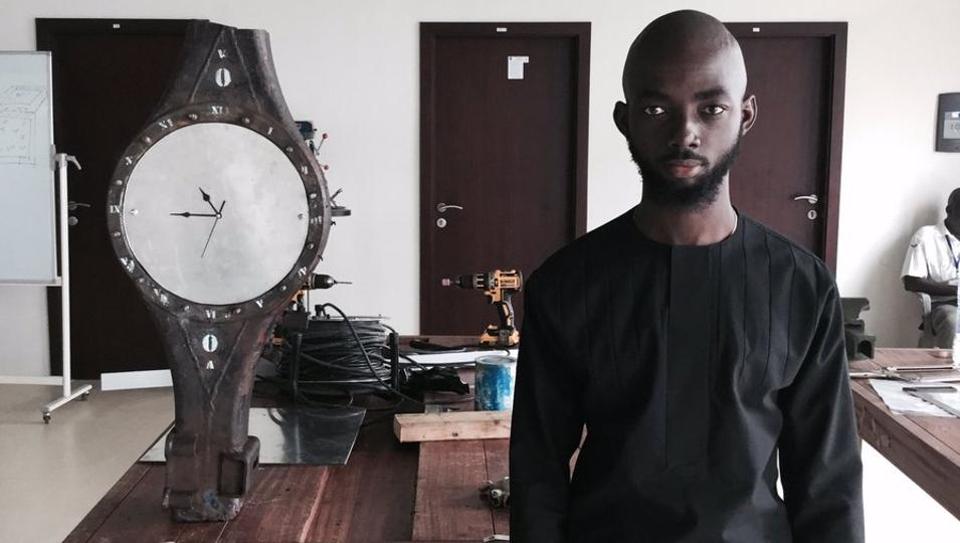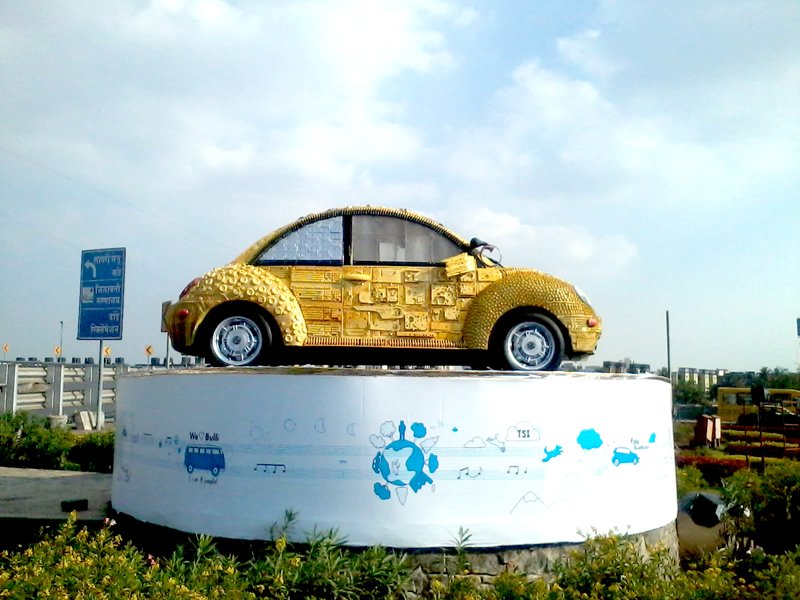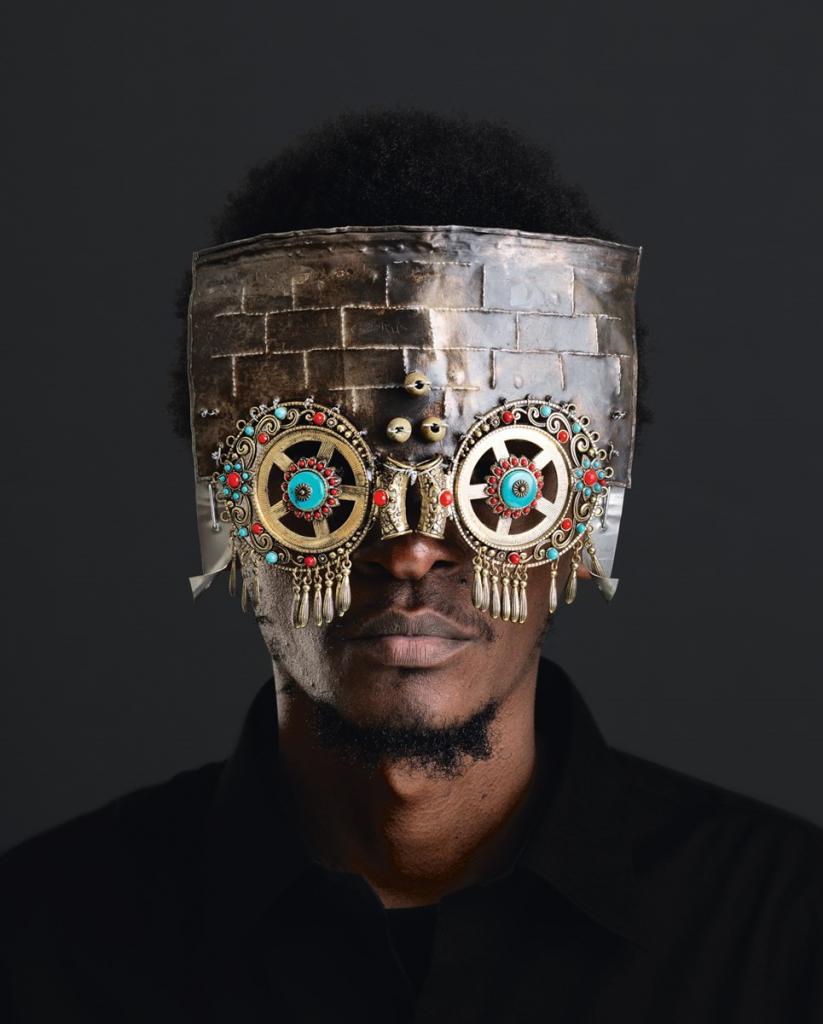E-waste is a growing problem, and finding uses for redundant ICT equipment has been on the minds of sustainability experts for years. However, it turns out it's also been on the minds of some artists! Here are 5 ways that e-waste has been used for art:
Mobile Phone "Tower of Babel"
 On March 30, 2019, in a shopping centre in Beijing, artist Shen Bolun unveiled his art installation entitled 'Tongtian' as part of a Greenpeace campaign to raise awareness about e-waste.
On March 30, 2019, in a shopping centre in Beijing, artist Shen Bolun unveiled his art installation entitled 'Tongtian' as part of a Greenpeace campaign to raise awareness about e-waste.
The sculpture is made of discarded mobile phones and shaped like a cell tower. The phones have been rigged to a metal frame and synchronised so their screens flash in various colours, making an eye-catching statement.
"The inspiration of my tower comes from the Tower of Babel in the Bible,"
artist Shen Bolun told AFP, referring to the origin story explaining why people speak different languages.
You can see a video of the installation here: https://www.dailymotion.com/8525b729-9c4b-4101-ae9e-d6d4a0005d66
Turning Ghana's Toxic Waste into a thing of beauty
In the large waste dump Agbogbloshie in Ghana’s capital, Accra, Joseph Awuah-Darko has started planning the future of hte site, hoping his art inspires others to re-think the way the waste dump is seen:
“I don’t really think the future of Agbogbloshie is that it should be confined to a waste-dump. I think that it would be transformative. It will become a hub for design thinking, and innovative ways, working hand in hand with the whole populace there to kind of create value added mechanisms and value added products from the waste.”
In January this year, he co-founded the non-profit Agbogblo.Shine Initiative, this innovative organisation encourages workers at the dump to turn waste into high-end furniture.
“It’s true that Agbogbloshie is a result of negative externalities from dumping by more developed European countries, but I saw, or I chose to see the opportunity within the mess. I chose to see the opportunity to create, and turn what has been called a dump into an opportunity.”
Workers in the dump are exposed daily to harmful fumes by burning obsolete and unwanted appliances such as mobile phones, computers, televisions and plastics that are brought to Ghana from around the world. Burning the waste allows them to salvage and resell copper and other metals from these leftovers of modern consumer culture.
Awuah-Darko’s first piece of work is a grandfather clock, made from a galvanized car axle, aluminium and part of a discarded wall clock. Two hotels in Accra are in a bidding war, each hoping to win ownership of the clock.
You can see a video of his work here: https://twitter.com/i/status/956353446692581377
Mumbai's magical e-waste lion
India is among the top five generators of e-waste in the world generating over two million tonnes each year, but local artist Haribaabu Naatesan has turned rubbish into riches by recycling e-waste into eye-catching works of art. Starting in 1999, Hari has created works of art including a life-size yellow Volkswagen beetle, a flamboyance of flamingos and a steampunk-inspired clock tower.
Hari's Volkswagen Beetle is made with over 2,805 pieces of scrap including 800 spark plugs, 200 bottle caps, 60 mother boards, audio cassettes, typewriters, pens, and barbecue sticks.
Functioning as a street light as well as a reminder of the migration of local flamingos in the area, this gigantic sculpture is made from redundant automobile parts like petrol tanks of a bike, shock absorbers, head lights, and more.
Haribaabu is from from Kerala and was brought up in Chennai where he graduated from the Chennai Government College of Fine Arts with a BSc degree in visual communication in 1999.
“My bank balance was below average. My friends and relatives started questioning my decision. They would say, ‘Paagal hai tu! Kyun struggle kar raha hai?’ (You are mad. Why are you struggling?). But I did not give up.”
He became the first recipient of the Bajaj Art Gallery fellowship award which led to commissioned projects and within a year, he had set up a studio in Mumbai. In his work he has recycled several tonnes of e-waste and made over 100 sculptures.

Jewellery from e-waste
Eliza Walter founded ‘Lylie’s’ in 2017 aged 24 after training as a goldsmith in London’s Hatton Garden. After learning about the possibility of e-mining whilst at school, she pursued the idea of a circular supply chain through university, whilst completing her goldsmiths training and working for two Bond Street jewellers.

She designs and creates jewellery made with e-waste, salvaging the precious metals from discarded technology. Lylie's taps into two hugely popular trends - sustainability and customisation.
I hope that it becomes the norm for a customer to ask who made which parts, and where. And for them, when considering a purchase, to send the chosen brand all unworn/unwanted/broken pieces, to be recycled in exchange for credit against the new piece.

Wearable art in Kenya
Kenyan artist Cyrus Kabiru describes himself as "one of nature's soldiers". The 35-year-old collects rubbish from the streets of Nairobi and creates wearable sculptures from glasses embellished with bottle tops, beads and bits of wire, to beautiful bicycles.
“When I walk, I just collect. But nowadays, people know what I want, I get shining metals, even some wire and copper – very colourful trash,” he says. “If it’s plastic we get a very bright plastic. You have unique trash. Very clean.”

Find out how Computer Aid's IT disposal service helps combat e-waste here

